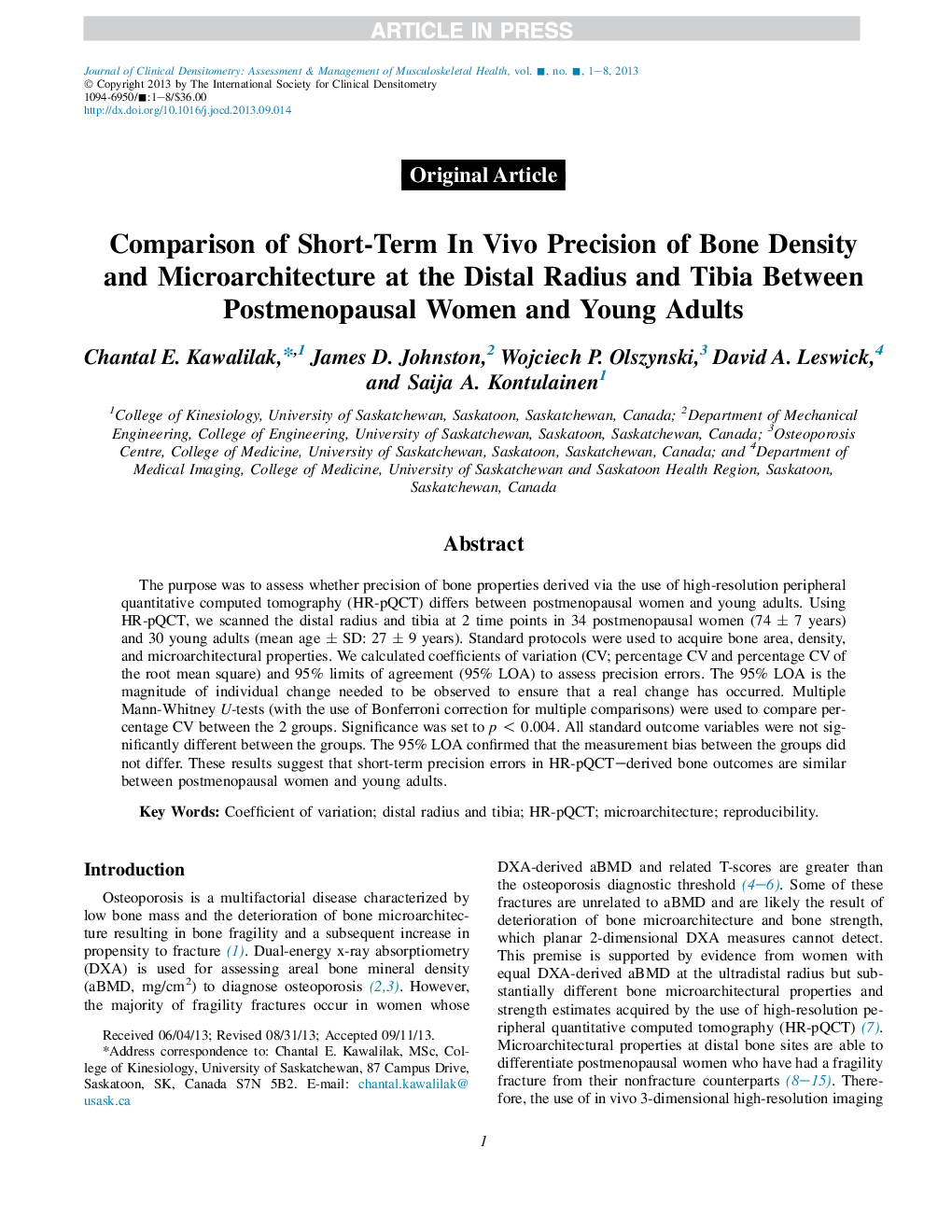| Article ID | Journal | Published Year | Pages | File Type |
|---|---|---|---|---|
| 10168116 | Journal of Clinical Densitometry | 2014 | 8 Pages |
Abstract
The purpose was to assess whether precision of bone properties derived via the use of high-resolution peripheral quantitative computed tomography (HR-pQCT) differs between postmenopausal women and young adults. Using HR-pQCT, we scanned the distal radius and tibia at 2 time points in 34 postmenopausal women (74 ± 7 years) and 30 young adults (mean age ± SD: 27 ± 9 years). Standard protocols were used to acquire bone area, density, and microarchitectural properties. We calculated coefficients of variation (CV; percentage CV and percentage CV of the root mean square) and 95% limits of agreement (95% LOA) to assess precision errors. The 95% LOA is the magnitude of individual change needed to be observed to ensure that a real change has occurred. Multiple Mann-Whitney U-tests (with the use of Bonferroni correction for multiple comparisons) were used to compare percentage CV between the 2 groups. Significance was set to p < 0.004. All standard outcome variables were not significantly different between the groups. The 95% LOA confirmed that the measurement bias between the groups did not differ. These results suggest that short-term precision errors in HR-pQCT-derived bone outcomes are similar between postmenopausal women and young adults.
Related Topics
Health Sciences
Medicine and Dentistry
Endocrinology, Diabetes and Metabolism
Authors
Chantal E. Kawalilak, James D. Johnston, Wojciech P. Olszynski, David A. Leswick, Saija A. Kontulainen,
